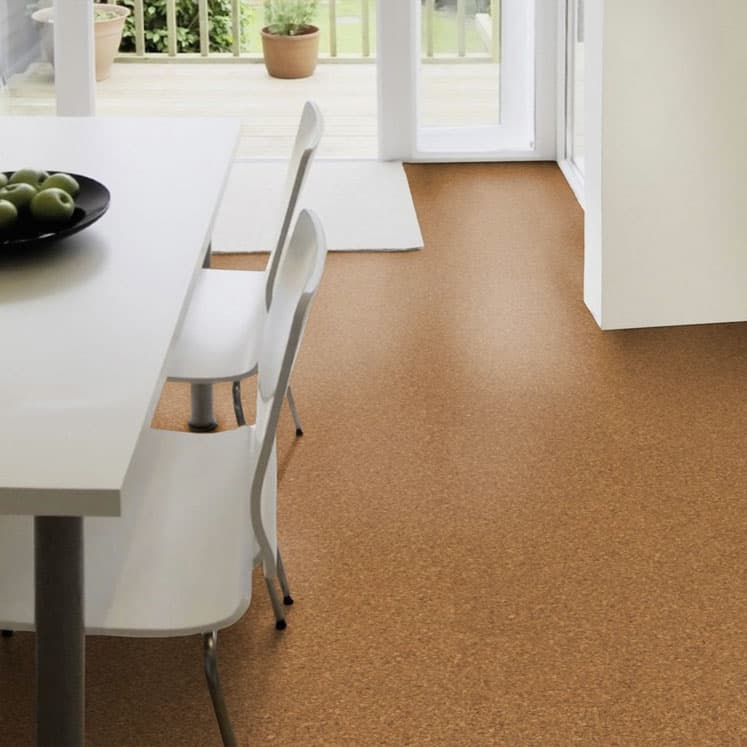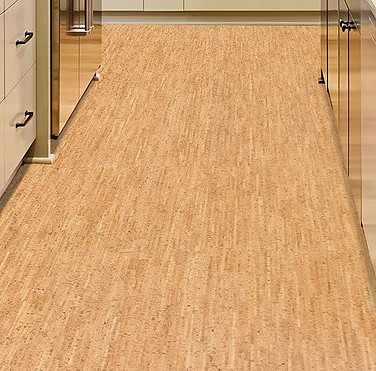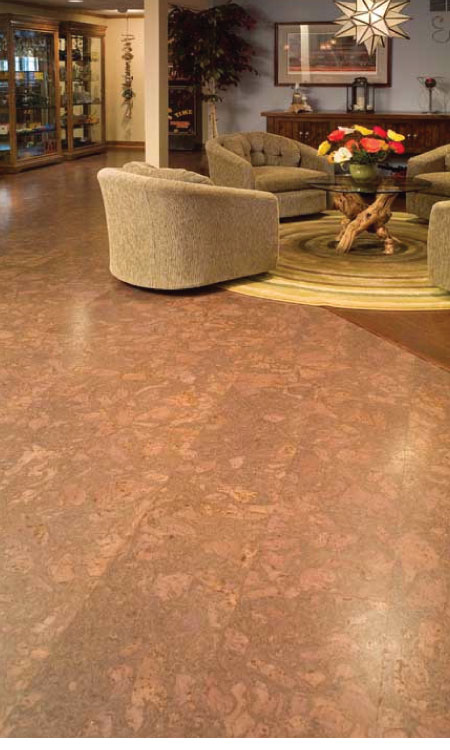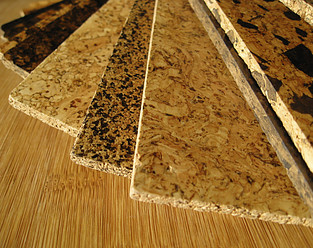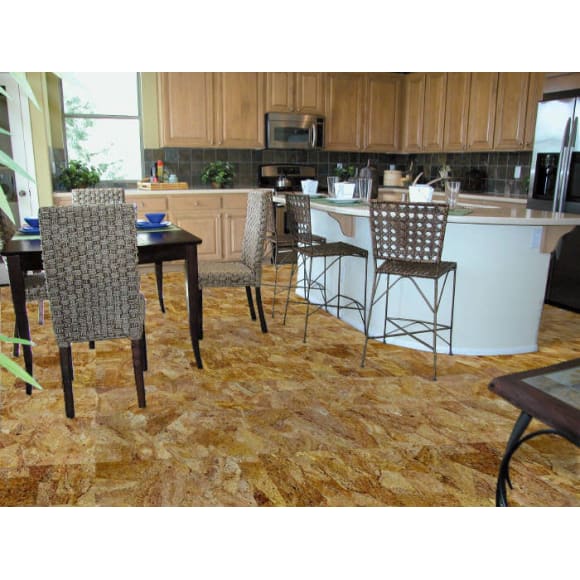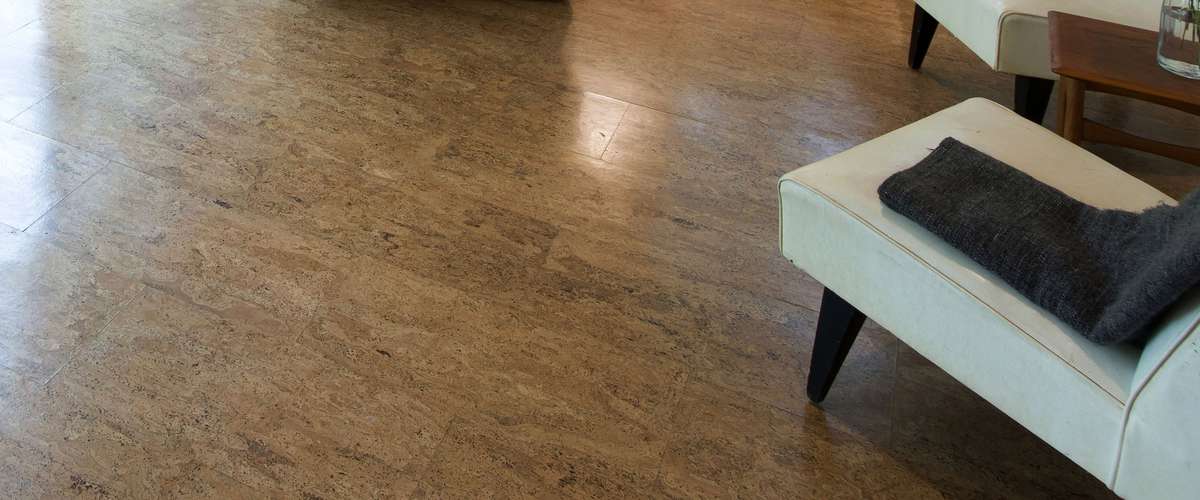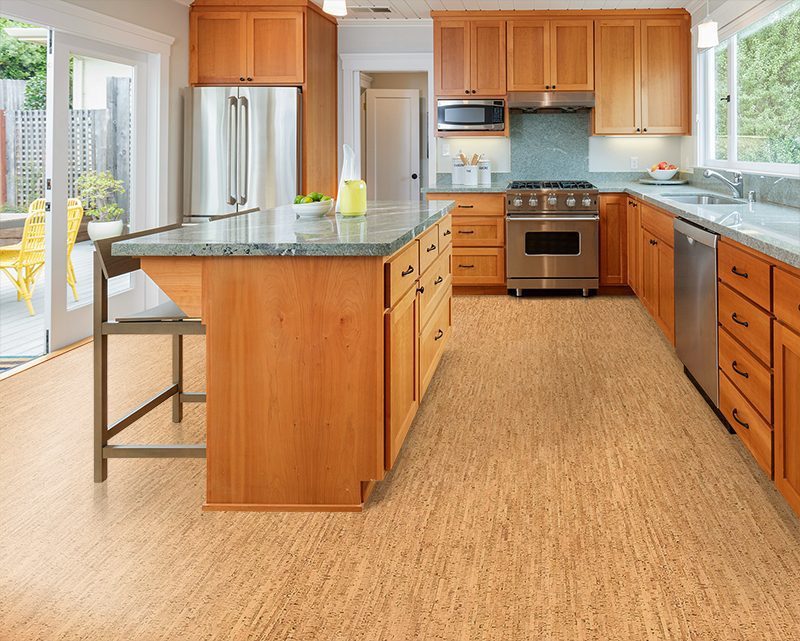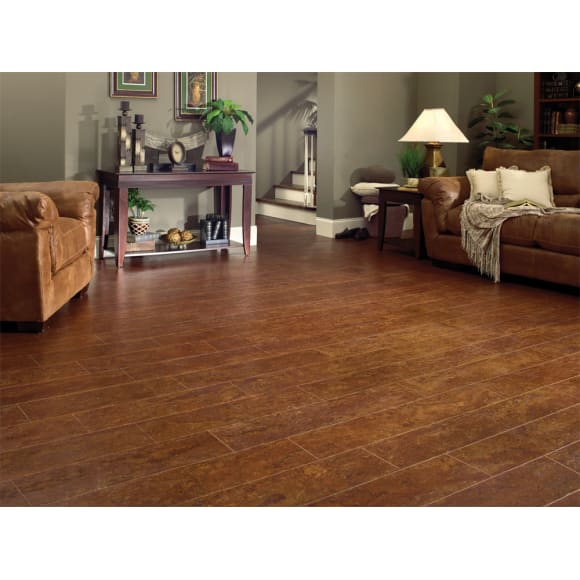The Benefits of Eco-Friendly Cork Flooring
Introduction: Cork flooring has gained popularity in recent years as a sustainable and eco-friendly option for homes. It offers a range of benefits that make it an attractive choice for environmentally conscious homeowners. Below are the advantages of eco-friendly cork flooring and why it is a sustainable choice for your home.
- Durability and Longevity: One of the key benefits of cork flooring is its durability and longevity. Cork is known for its natural resilience, which allows it to withstand heavy foot traffic and resist wear and tear. Unlike other flooring options, cork can bounce back, making it highly durable and long-lasting. This means that you can enjoy the beauty of cork flooring for years to come, reducing the need for frequent replacements and contributing to a more sustainable lifestyle.
- Thermal and Acoustic Insulation: Another significant advantage of cork flooring is its excellent thermal and acoustic insulation properties. Cork is an excellent insulator, helping to maintain a comfortable temperature in your home while reducing energy consumption. It also acts as a natural sound absorber, minimizing noise transmission between floors and rooms. This makes cork flooring a great choice for creating a peaceful and energy-efficient living environment.
- Hypoallergenic and Easy to Maintain: For individuals with allergies or respiratory sensitivities, cork flooring is an ideal choice. It is naturally hypoallergenic, repelling dust, pollen, and other allergens. Additionally, cork contains a substance called suberin, which acts as a natural insect repellent, preventing the growth of mold, mildew, and bacteria. Maintaining cork flooring is also hassle-free, requiring only regular sweeping and occasional damp mopping to keep it clean and looking its best.
- Eco-Friendly and Renewable: Cork is a sustainable and renewable resource, making it an eco-friendly choice for flooring. The bark of the cork oak tree is harvested every 9 to 12 years without harming the tree, allowing it to regenerate and continue absorbing carbon dioxide from the atmosphere. This harvesting process does not involve the cutting down of trees, unlike other traditional flooring materials. By choosing cork flooring, you are actively contributing to the preservation of forests and the reduction of carbon emissions.
- Aesthetically Pleasing and Versatile: In addition to its environmental benefits, cork flooring offers a wide range of styles and designs to suit various home aesthetics. It comes in various colors, patterns, and textures, allowing you to create a unique and personalized look for your home. Whether you prefer a traditional or contemporary style, cork flooring offers versatility and elegance that can complement any interior design scheme.
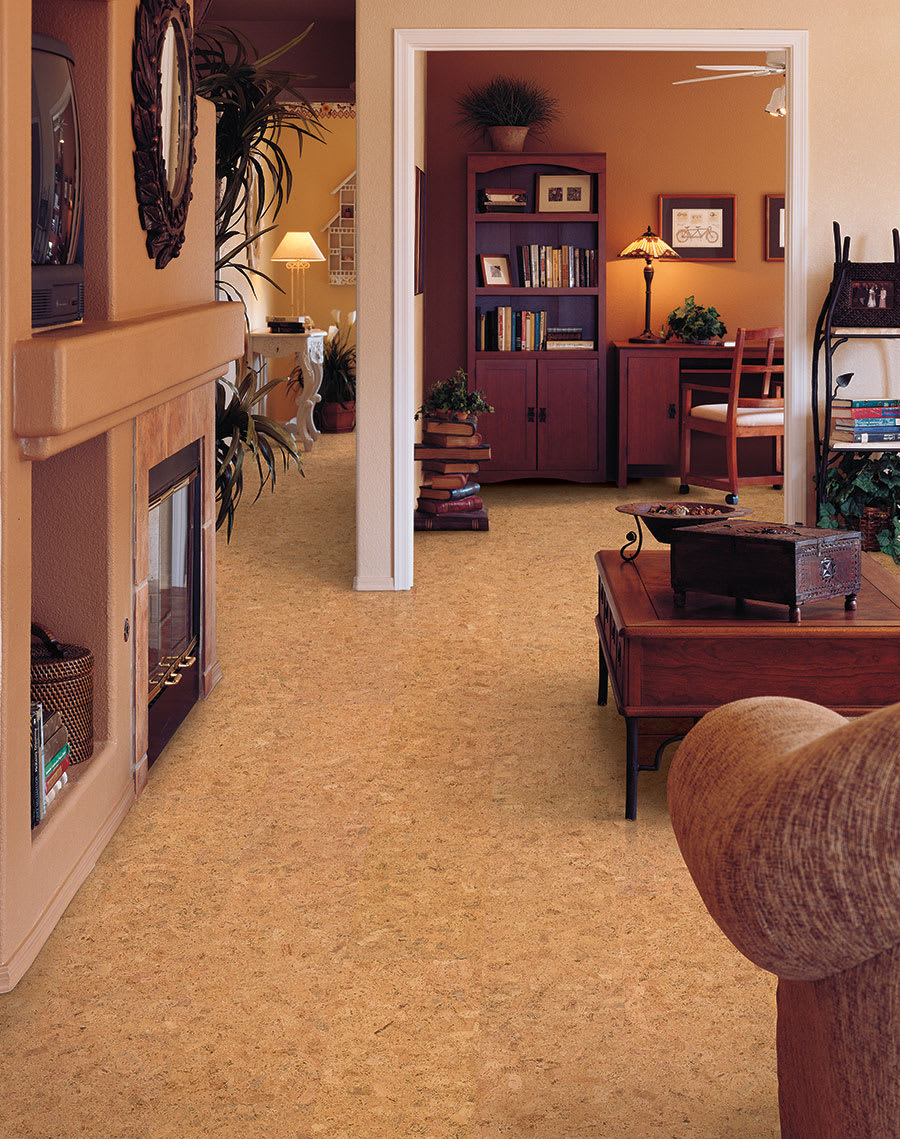
How Cork Flooring is Made
Introduction: Cork flooring is not only a sustainable choice for your home but also an environmentally friendly product from its manufacturing process to installation. Let’s find out how cork flooring is made, focusing on the environmentally friendly production processes that contribute to its eco-conscious reputation.
Harvesting Cork Bark: Cork flooring starts with the careful harvesting of cork bark from the cork oak tree (Quercus suber). The process involves stripping the outer layer of bark from the tree, typically done by skilled workers using specialized tools. Unlike other types of wood flooring, the harvesting of cork bark does not require the tree to be cut down, allowing the tree to live and continue its natural growth cycle.
Cork Bark Processing: After the cork bark is harvested, it undergoes a series of processes to transform it into cork flooring. The bark is stacked and left to dry naturally, a process that can take several months. Once dried, the bark is boiled or steamed to make it more pliable and easier to work with. It is then flattened and sorted based on quality and thickness.
Binding and Production: To create cork flooring, the processed cork bark is ground into small granules or chips. These granules are then mixed with binders, typically a water-based adhesive, to form a solid and durable material. The mixture is then pressed and heated to create cork flooring tiles or planks. No harmful chemicals or volatile organic compounds (VOCs) are used in this production process, making it an environmentally friendly choice.
Finishing and Sealing: Once the cork flooring tiles or planks are formed, they may undergo additional finishing processes. This can include adding protective layers or sealants to enhance their durability and resistance to moisture. It is important to note that eco-friendly cork flooring options use low-VOC or water-based sealants to minimize the release of harmful chemicals into the environment.
Recycling and Reuse: Another aspect of the environmentally friendly production process of cork flooring is the ability to recycle and reuse cork. Cork flooring can be recycled and transformed into other cork products, minimizing waste and extending the lifespan of this sustainable material. Additionally, cork flooring can be easily removed and reused in different spaces, reducing the need for new production.
Renewable Resources with Minimal Environmental Impact
Cork flooring is not only a sustainable choice for your home but also a flooring option that has minimal environmental impact. Let’s discuss the renewable nature of cork and explore how it contributes to a greener lifestyle with its low environmental footprint.
Cork Oak Tree: A Renewable Resource: Cork flooring is made from the bark of the cork oak tree (Quercus suber), which is primarily grown in Mediterranean countries such as Portugal, Spain, and Italy. The unique property of cork oak trees is that they can be harvested for their bark without causing harm to the tree itself. The bark regenerates over time, allowing for multiple harvests throughout the tree’s lifespan of up to 200 years. This renewable nature of cork oak trees makes them an ideal source of sustainable flooring material.
Carbon Sequestration and Reduced Emissions: Cork oak trees play a vital role in mitigating climate change by acting as carbon sinks. The process of photosynthesis, through which the trees convert carbon dioxide into oxygen, allows them to absorb and store significant amounts of carbon dioxide from the atmosphere. By choosing cork flooring, you are indirectly supporting the preservation of forests that contribute to the reduction of greenhouse gas emissions.
Low Energy Consumption in Production: Compared to other flooring materials such as hardwood or laminate, the production of cork flooring requires significantly less energy. The manufacturing process of cork flooring involves minimal energy-intensive steps. From the harvesting of cork bark to the grinding and pressing of cork granules, the overall energy consumption is relatively low. This further reduces the environmental impact associated with the production of cork flooring.
Biodegradability and Minimal Waste: Cork flooring is a biodegradable material, meaning it can naturally decompose without releasing harmful substances into the environment. At the end of its lifespan, cork flooring can be composted or recycled, reducing waste and contributing to a circular economy. Additionally, the production process of cork flooring generates minimal waste, as almost every part of the cork bark is utilized, leaving very little leftover material.
Responsible Forest Management: The cork industry operates under strict regulations and standards to ensure responsible forest management. Sustainable cork harvesting practices involve carefully selecting mature trees for bark extraction and allowing sufficient time for the bark to regenerate. This approach ensures the long-term health and viability of cork oak forests, preserving their ecological value and biodiversity.
Why Cork Flooring is Ideal for Eco-Conscious Homes
Cork flooring not only provides environmental benefits but also offers health advantages, making it an excellent choice for eco-conscious homes. Let’s see why cork flooring is a healthy and allergen-free option, promoting a clean and safe living environment.
Hypoallergenic Properties: Cork flooring is naturally hypoallergenic, meaning it repels dust, pollen, and other common allergens. Unlike carpets or other flooring materials that can trap allergens, cork does not provide a favorable environment for the accumulation of dust mites, mold, or mildew. This makes it an ideal choice for individuals with allergies or respiratory sensitivities, as it helps to minimize allergen exposure and improve indoor air quality.
Suberin: The Natural Repellent: One of the unique properties of cork is the presence of a substance called suberin. Suberin acts as a natural insect repellent and provides cork with its resistance to moisture, mold, and mildew. This natural barrier inhibits the growth of bacteria and fungi, making cork flooring a healthier option for eco-conscious homes. The antimicrobial properties of cork contribute to a cleaner and safer living environment.
VOC-Free and Low Chemical Emissions: Volatile organic compounds (VOCs) are chemicals that can be emitted from certain flooring materials and contribute to indoor air pollution. However, cork flooring is known for its low VOC emissions. The production process of cork flooring utilizes water-based adhesives and sealants, minimizing the release of harmful chemicals into the air. This ensures that the indoor air quality remains high and reduces the risk of respiratory issues or allergic reactions.
Thermal Comfort and Noise Reduction: Cork flooring provides excellent thermal insulation, helping to maintain a comfortable temperature in your home. It naturally retains heat, making it warm to the touch and reducing the need for excessive heating. Additionally, cork’s cellular structure and natural elasticity make it an effective sound absorber, reducing noise transmission between floors and rooms. This creates a quieter and more peaceful living environment, enhancing overall well-being.
Easy Maintenance and Durability: Maintaining a clean and healthy home is made easier with cork flooring. It is a low-maintenance option that only requires regular sweeping and occasional damp mopping to keep it looking its best. Cork’s natural resilience and durability allow it to withstand heavy foot traffic without showing signs of wear and tear. This longevity reduces the need for frequent replacements, minimizing waste and promoting a sustainable lifestyle.
Stylish and Sustainable Flooring Options for Every Room
Cork flooring is not only a sustainable and eco-friendly choice but also a stylish option for designing your home. Let’s explore the versatility and aesthetic appeal of cork flooring, showcasing how it can enhance the beauty of every room in your house while maintaining its sustainability.
Natural Beauty and Warmth: Cork flooring offers a natural beauty that adds warmth and character to any room. With its unique texture and grain patterns, cork provides a visually appealing surface that can complement a variety of interior design styles. Whether you prefer a rustic, contemporary, or traditional look, cork flooring can be customized to meet your design preferences.
Wide Range of Colors and Finishes: Cork flooring comes in a wide range of colors and finishes, allowing you to choose the perfect option for each room in your home. From light and natural tones to darker shades, cork offers versatility in design. Additionally, cork flooring can be finished with different sealants to achieve the desired level of shine or matte appearance, providing even more options for customization.
Pattern and Design Options: Cork flooring can be installed in various patterns and designs, adding visual interest and creativity to your space. Whether you prefer a classic checkerboard pattern, herringbone, or a more unique layout, cork can be cut and installed to create the desired effect. This flexibility in design allows you to express your style and create a one-of-a-kind flooring solution.
Comfort and Softness: Cork flooring provides a comfortable and soft surface underfoot, making it a great choice for areas where you spend a lot of time standing or walking. The natural elasticity of cork creates a cushioning effect, reducing strain on your joints and providing a more comfortable experience. This is especially beneficial in rooms such as kitchens, playrooms, or home offices, where comfort is essential.
Sustainable Design Choice: In addition to its visual appeal, cork flooring is a sustainable design choice that aligns with eco-conscious values. By choosing cork, you are opting for a renewable and environmentally friendly material that has a low impact on the planet. The sustainable production process and responsible forest management practices behind cork flooring make it a conscious choice for designing a sustainable home.
Cork Flooring – Eco-friendly Renewable Flooring Solution
Cork Flooring: more Green Flooring Options Eco World
Nova Naturals, Cork Floating Floor – Eco-Friendly, Durable, Non
Cork Flooring 101: Cost, Types, u0026 Installation – This Old House
DIY Cork Flooring – Pros, Cons u0026 Green Installation Guide for LEED
Kitchen Flooring With Natural Cork Flooring – ICork Floor
US Floors, Natural Cork New Dimensions – Narrow Plank – Eco
Related Posts:
